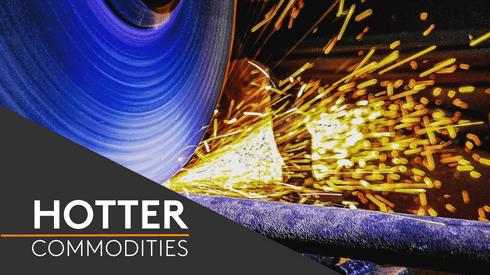Mass uncertainty over the macro-economic picture continues to weigh on markets. Participants are awaiting the US Federal Reserve’s open market committee meeting on Wednesday, November 2, in which the expectation is that interest rates could rise by 75 basis points for the fourth time.
Our general takeaway for the week could be summarized in two words: mass confusion.
“Of course, we say that every year to describe sentiment at the LME, but this year we really mean it. There are so many “moving parts” in the markets these days that forecasting prices (let alone anything else) is next to impossible,” he added.
Three-month futures prices at Monday’s 5pm close – compared with the previous day’s close – were as follows:
Copper: $7,450 per tonne, down 1.3%
Aluminium: $2,222 per tonne, up 0.5%
Nickel: $21,809 per tonne, down 1.5%
Zinc: $2,697 per tonne, down 4.4%
Lead: $1,973 per tonne, down 0.7%
Tin: $17,631 per tonne, down 0.9%
The three-month zinc price was the worst performer on the day, sinking to its lowest since February 2021.
“Today’s downside break suggests growing concerns of demand destruction have prompted zinc bulls to capitulate,” Fastmarkets analyst James Moore said.
“But we believe underlying structural factors such as falling LME warehouse availability and the threat of further smelter closures have the potential to squeeze prices higher in the short term,” he added.
Zinc prices had been supported through 2022 by concerns over supply due to soaring energy costs forcing smelter closures in Europe, with Glencore reporting notably lower production.
But it appears that companies such as Korea Zinc will look to fill this supply gap. Fastmarkets research forecasts that the global zinc market will record a deficit of 232,000 tonnes in 2022, but that this will shift to a 132,000-tonne surplus in 2023.
Zinc was traded in high volumes on Monday, with 12,278 lots traded. By comparison, only 5,679 lots were traded on Monday, October 24.
The one metal to buck the downtrend Monday was aluminium, which edged 0.5% higher.
“We think that aluminium is still trying to form a bottoming pattern and should be able to work its way higher in the coming weeks,” Fastmarkets analyst Andy Farida said.
Total LME stocks rose to 586,225 tonnes on October 31 from a 2022 low of 325,000 tonnes on October 11. But the lack of metal in European warehouses persists.
According to the latest National Bureau of Statistics data, China’s primary aluminium production was 3.42 million tonnes in September, up by 9.3% year on year.
But aluminium premiums across the globe continue to decline amid conflicting fundamentals – a supply crunch that would come from a potential ban on Russian material by the United States and slow spot activity due to falling demand.
Spot power prices in Germany were last trading at €80.62 ($80.32) per MWh, down from its record high in August this year at €658.41 per MWh, with German gas storage sites 92.8% full.
“Uncertainties over Europe’s ability to rebuild gas supplies for the 2023-24 winter mean that smelting capacity may stay offline far longer than what is already priced in,” Farida said.





